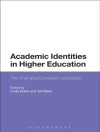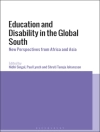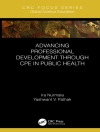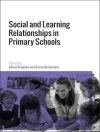Biosocial Worlds presents state-of-the-art contributions to anthropological reflections on the porous boundaries between human and non-human life – biosocial worlds. Based on changing understandings of biology and the social, it explores what it means to be human in these worlds. Growing separation of scientific disciplines for more than a century has maintained a separation of the ‘natural’ and the ‘social’ that has created a space for projections between the two. Such projections carry a directional causality and so constitute powerful means to establish discursive authority.
While arguing against the separation of the biological and the social in the study of human and non-human life, it remains important to unfold the consequences of their discursive separation. Based on examples from Botswana, Denmark, Mexico, the Netherlands, Uganda, the UK and USA, the volume explores what has been created in the space between ‘the social’ and ‘the natural’, with a view to rethink ‘the biosocial’. Health topics in the book include diabetes, trauma, cancer, HIV, tuberculosis, prevention of neonatal disease and wider issues of epigenetics. Many of the chapters engage with constructions of health and disease in a wide range of environments, and engage with analysis of the concept of ‘environment’. Anthropological reflection and ethnographic case studies explore how ‘health’ and ‘environment’ are entangled in ways that move their relation beyond interdependence to one of inseparability. The subtitle of this volume captures these insights through the concept of ‘health environment’, seeking to move the engagement of anthropology and biology beyond deterministic projections.
Praise for Biosocial Worlds ‘Of particular relevance to AMR research is Jens Seeberg’s chapter on the biosocial dynamics of multidrug-resistant tuberculosis in India, from a bacterial perspective. He explores the failure of Directly Observed Therapy (DOTs) in terms of interrupted exposure (or contamination) of bacteria to TB treatment, rather than standard public health explanations of inappropriate protocols and, defaulting and non-compliance. Through this analysis, he moves beyond a focus on individual behaviour, to highlight the political economy of health systems and treatments, and their contribution to the development of drug resistance.’
Antimicrobials in Society (AMIS) Hub, London School of Hygiene & Tropical Medicine
‘Biosocial Worlds is an excellent contribution to understanding health environments and a conversation-starter about the increasingly apparent biosocial realities created within health environments.’
American Journal of Biological Anthropology
Mục lục
List of figures
Notes on contributors
Introduction
Jens Seeberg, Andreas Roepstorff and Lotte Meinert
1. Permeable Bodies and Environmental Delineation
Margaret Lock
2. Situating Biologies. Studying Differentiation as Material-Semiotic Practice
Jörg Niewöhner
3. Pig–Human Relations in Neonatology: Knowing and Unknowing in a Multi-Species Collaborative
Mette N. Svendsen
4. Anthropology’s End to Biodeterminism: A New Sociobiology
A. David Napier
5. Tribes Without Rulers: Bacteria Life In The Human Holobiont
Allan Young
6. Biosocial Dynamics of Multidrug-Resistant Tuberculosis: A Bacterial Perspective
Jens Seeberg
7. When Sickness Comes in Multiples: Co-morbidity in Botswana
Julie Livingston
8. Legacies of Violence: The Communicability of Spirits and Trauma in Northern Uganda
Lotte Meinert and Susan Reynolds Whyte
9. Extinction and Time amid Climate Change or, What is a Horizon?Adriana Petryna
Afterword: Getting Closer?
Anna Tsing
Index
Giới thiệu về tác giả
Lotte Meinert is Professor at the Department of Anthropology, Aarhus University.












